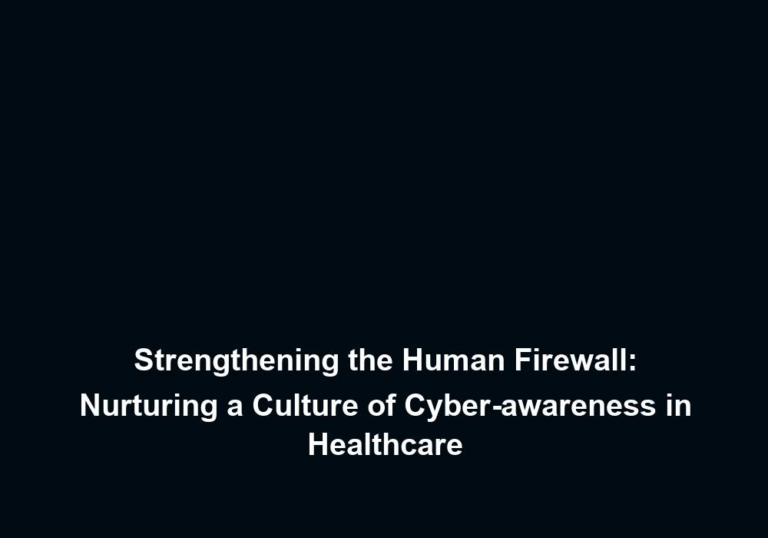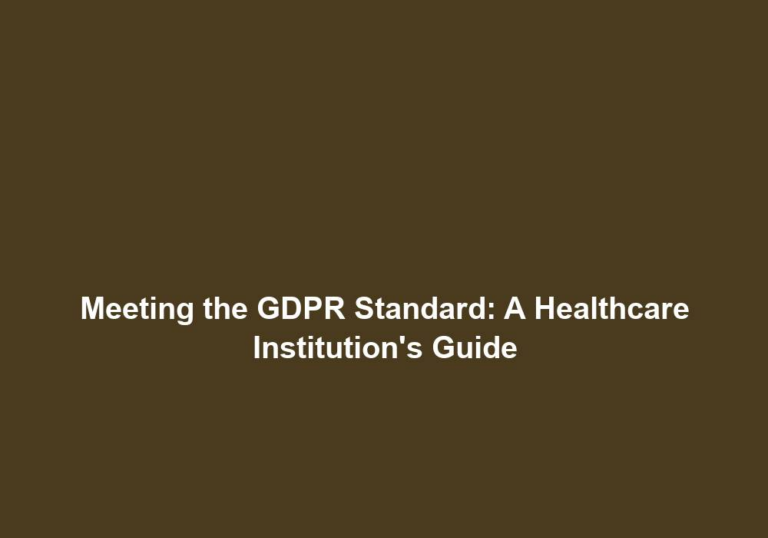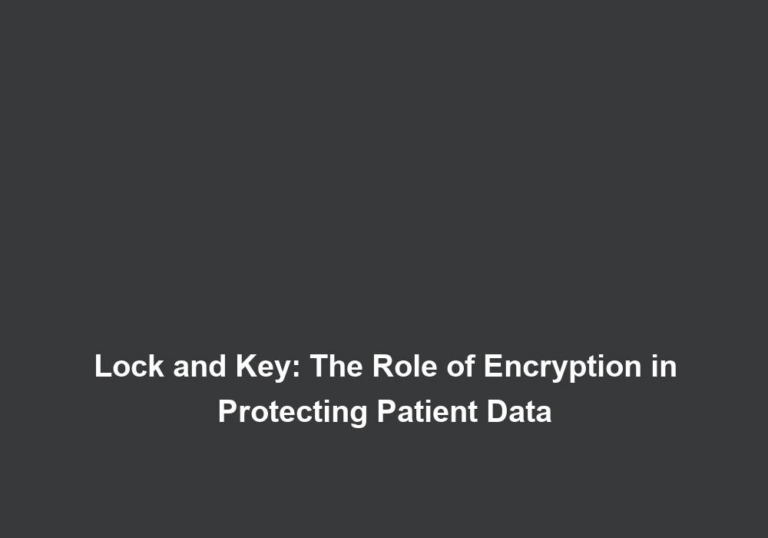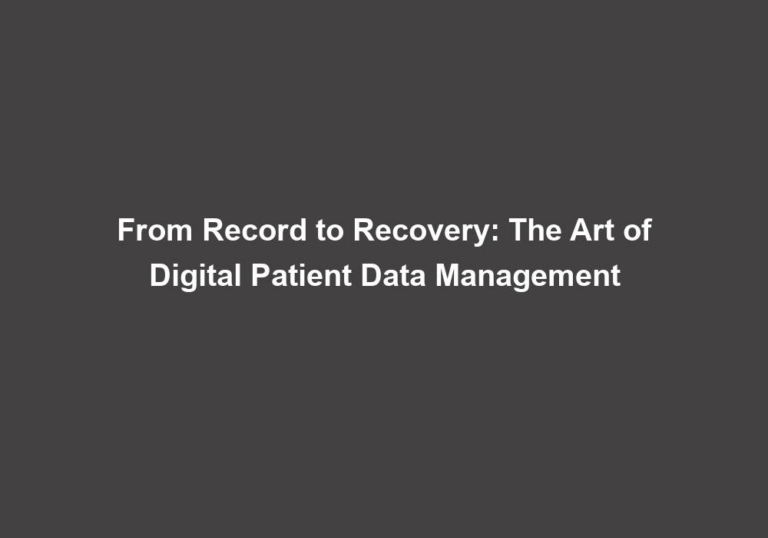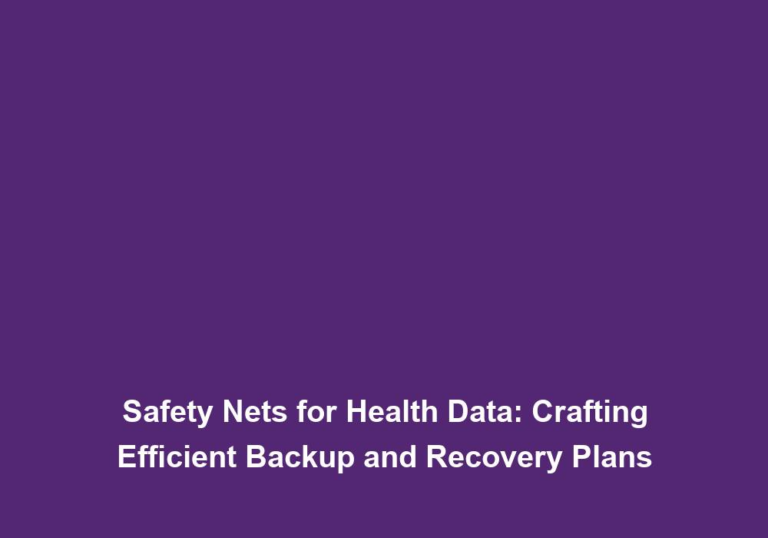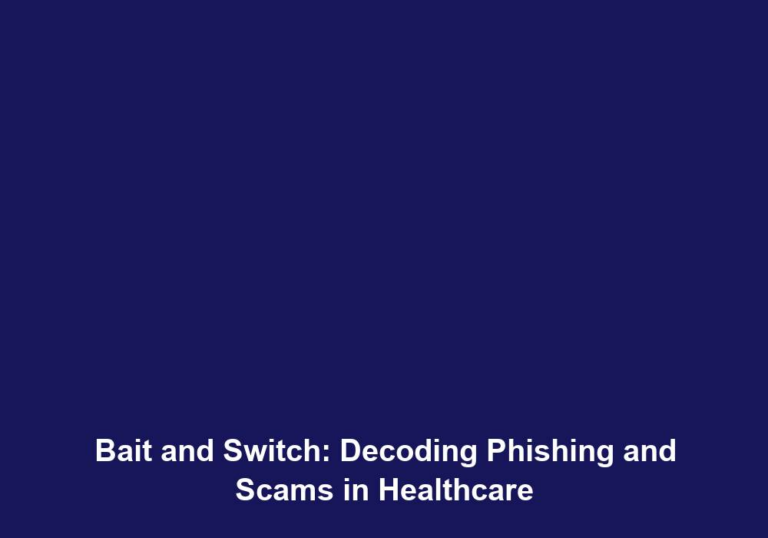From Intrusion to Intervention: A Guide to Threat Identification and Mitigation in Healthcare
In today’s interconnected world, the threat landscape is constantly evolving, making it crucial for businesses and organizations to have a robust system in place for the identification and mitigation of threats. From cyber attacks to physical intrusions, being proactive and prepared is essential to safeguarding the integrity and security of your operations. This guide aims to provide an overview of the key steps involved in threat identification and mitigation, offering insights and strategies to help you effectively respond to potential threats.
Understanding Threats
Before diving into the specifics of threat identification and mitigation, it is important to have a clear understanding of the different types of threats that your organization may face. Threats can be classified into various categories, including but not limited to:
-
Cyber Threats: These encompass a wide range of malicious activities conducted through digital channels, such as hacking, malware attacks, phishing, and data breaches. Cyber threats are one of the fastest-growing risks faced by organizations today. They can result in financial losses, reputational damage, and legal implications. It is crucial for organizations to be aware of the latest cyber threats and employ effective security measures to prevent and respond to them.
-
Physical Threats: These refer to potential dangers to the physical security of your premises or personnel, including unauthorized access, theft, vandalism, or violence. Physical threats can have immediate and tangible impacts on your organization, such as property damage, injury, or loss of life. It is important to have robust physical security measures in place, including access controls, surveillance systems, and emergency response protocols, to minimize the risks associated with physical threats.
-
Environmental Threats: These pertain to natural disasters, such as earthquakes, floods, fires, or extreme weather conditions, which can disrupt operations and pose a threat to your organization’s infrastructure. Environmental threats are often unpredictable and can cause significant damage to your organization’s assets and operations. It is essential to have emergency preparedness plans in place and regularly assess and mitigate the risks associated with environmental threats.
The Threat Identification Process
The first step in threat identification is conducting a comprehensive risk assessment. This involves analyzing your organization’s vulnerabilities, assets, and potential threats. By thoroughly understanding your weaknesses and the likelihood of specific threats, you can prioritize your efforts and allocate resources effectively. Here are the key steps involved in the threat identification process:
1. Identify Assets and Critical Information
Begin by identifying your organization’s assets, both tangible and intangible. Tangible assets may include physical infrastructure, equipment, or inventory, while intangible assets could encompass sensitive data, intellectual property, or customer information. Classify these assets based on their criticality and their value to your organization’s operations.
To further expand on this step, consider the following:
- Create an inventory of all tangible assets, including their location and value.
- Identify and document all intangible assets, such as trade secrets, patents, or copyrights.
- Evaluate the importance of each asset to your organization’s operations and prioritize them accordingly.
2. Assess Vulnerabilities
Once your assets are identified, assess the vulnerabilities that could potentially be exploited to compromise their security. This may involve conducting security audits, penetration testing, or vulnerability assessments to identify weaknesses in your systems, processes, or physical security measures.
To delve deeper into this step, consider the following:
- Perform regular security audits to identify any gaps or vulnerabilities in your systems.
- Conduct penetration testing to simulate potential attacks and assess the effectiveness of your security measures.
- Evaluate physical security measures, such as access controls and surveillance systems, to identify any weaknesses or areas of improvement.
3. Evaluate Threat Likelihood
Evaluate the likelihood of various threats occurring based on historical data, industry trends, and expert analysis. Consider factors such as the prevalence of specific cyber threats, the geographical location of your organization, and the probability of environmental hazards in your area.
To provide more detail on this step, consider the following:
- Research and analyze historical data and industry reports to identify common threats in your sector.
- Consult with security experts or engage with threat intelligence services to stay updated on emerging threats.
- Assess the specific risks associated with your geographical location, such as the likelihood of natural disasters or criminal activities.
4. Estimate Impact
Assess the potential impact of each identified threat on your organization’s operations, finances, reputation, and stakeholders. This will help you prioritize your mitigation efforts based on the severity of potential consequences.
To expand on this step, consider the following:
- Evaluate the financial implications of a security breach, including potential revenue loss or legal expenses.
- Consider the potential damage to your organization’s reputation and customer trust in the event of a security incident.
- Identify the stakeholders who would be affected by each threat and assess their potential concerns or vulnerabilities.
5. Prioritize and Mitigate
Based on the likelihood and impact assessment, prioritize the identified threats and develop a mitigation strategy for each. This may involve implementing security controls, such as firewalls, antivirus software, access controls, or physical security measures. Regularly review and update these measures to stay ahead of emerging threats.
To provide a comprehensive overview of this step, consider the following:
- Develop a mitigation plan for each identified threat, outlining specific actions and timelines.
- Implement security controls and measures based on industry best practices and the specific requirements of each threat.
- Regularly review and update your mitigation strategies to adapt to evolving threats and emerging technologies.
Mitigating Threats: Best Practices
Mitigating threats requires a proactive approach and a combination of preventive, detective, and corrective measures. Here are some best practices to consider:
1. Develop a Comprehensive Security Policy
Establish a comprehensive security policy that outlines clear guidelines, procedures, and responsibilities for threat identification, reporting, and response. Ensure that all employees are aware of this policy and provide regular training to enhance their security awareness.
To elaborate on this best practice, consider the following:
- Clearly define roles and responsibilities for threat identification and reporting within your organization.
- Document procedures for reporting security incidents and ensure that employees are aware of the appropriate channels.
- Provide regular training sessions to educate employees on the latest security threats and preventive measures.
2. Implement Access Controls
Utilize strong access controls, including unique user credentials, multi-factor authentication, and role-based access management to restrict unauthorized access to sensitive systems and data.
To provide more details on this best practice, consider the following:
- Implement strong password policies, such as enforcing complex passwords and regular password changes.
- Utilize multi-factor authentication methods, such as biometrics or token-based authentication, to enhance access security.
- Assign user roles and permissions based on the principle of least privilege to limit access to sensitive data and systems.
3. Regularly Update and Patch Systems
Stay up to date with the latest security patches and updates for your software, hardware, and network infrastructure. Regularly conduct vulnerability assessments to identify and address any weaknesses promptly.
To further elaborate on this best practice, consider the following:
- Establish a process for regularly monitoring and applying security patches to all software and hardware.
- Implement an automated system for tracking and applying updates to ensure timely patching.
- Conduct regular vulnerability assessments to identify any potential weaknesses in your systems and promptly address them.
4. Encrypt Sensitive Data
Implement robust encryption mechanisms to protect sensitive data, both in transit and at rest. Encryption ensures that even if data is intercepted or stolen, it remains unreadable and unusable to unauthorized individuals.
To provide more detail on this best practice, consider the following:
- Utilize encryption protocols, such as AES or RSA, to protect sensitive data during transmission.
- Implement data encryption at rest to safeguard sensitive information stored on servers or databases.
- Regularly review and update encryption mechanisms to align with industry best practices and emerging technologies.
5. Monitor and Detect Anomalies
Implement advanced monitoring systems and intrusion detection tools to identify any unusual activity or behavior within your network or physical premises. Regularly review logs and conduct security audits to detect potential threats or vulnerabilities.
To further expand on this best practice, consider the following:
- Deploy intrusion detection and prevention systems (IDPS) to monitor network traffic and identify potential threats.
- Utilize security information and event management (SIEM) solutions to centralize log data and enable proactive threat detection.
- Conduct regular security audits to assess the effectiveness of your monitoring systems and identify any gaps or weaknesses.
6. Develop an Incident Response Plan
Prepare a detailed incident response plan that outlines the steps to be taken in the event of a security breach or threat. This plan should include clear communication channels, escalation processes, and predefined roles and responsibilities to minimize the impact of an incident.
To provide more detail on this best practice, consider the following:
- Develop a step-by-step incident response plan that outlines the actions to be taken during different types of security incidents.
- Establish clear communication channels, both internal and external, to ensure timely and effective response and coordination.
- Define roles and responsibilities for incident response team members and conduct regular drills and exercises to test the plan’s effectiveness.
7. Regularly Train and Educate Employees
Invest in regular security training and awareness programs for all employees to educate them about the latest threats, social engineering techniques, and safe practices. Encourage a culture of security consciousness within your organization.
To further elaborate on this best practice, consider the following:
- Conduct regular security awareness training sessions to educate employees about common security threats and how to identify and respond to them.
- Provide ongoing communication and updates regarding emerging threats and best practices to keep employees informed and engaged.
- Encourage employees to report any security concerns or incidents promptly and reward proactive behavior that contributes to a secure work environment.
By following these best practices and diligently implementing your threat identification and mitigation strategies, you can significantly enhance your organization’s security posture, minimize risks, and effectively respond to potential threats. Remember, threat landscapes evolve, so it is essential to regularly reassess your risks and adapt your strategies accordingly.
This article is written in Markdown format.


